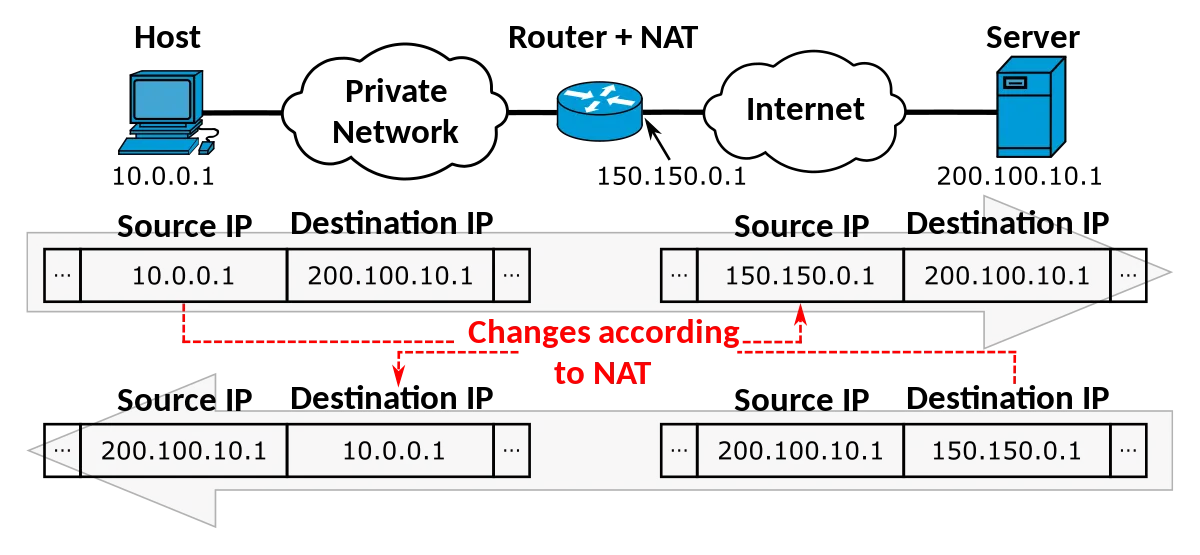Networking
Toolset
There two most commonly used tools for the configuration of networks on Linux:
- old toolset (e.g.,
ifconfig) - new toolset (e.g.,
ip)
The old toolset may be installed with the net-tools package. The new tools are
available in the iproute2 package.
Basic commands:
ip a- shows interfacesip r- shows routesnmcli- Network Manager CLI, can be used to modify interfaces (e.g., to set static IP address)sudo ip link set ens33 [up/down]- enabling/disabling an interfacenetstat -tuan- shows open ports on the host (TCP/UDP)nmap- port scanner
Firewall
There are a bunch of tools that allow us to manage firewall:
iptables- deprecated, but the syntax is still in use via nftables compatibility layer.nftables- a replacement for iptables, it also has iptables-compatible CLI. The new CLI is invoked withnft.ufw- shipped with Ubuntu-based distrosfirewalld- part of systemd suite. It’s controlled with thefirewall-cmdcommand.
iptables
The rules are stored in a files. They are split into:
- tables
- chains
The rules have one of the following outcomes:
- ACCEPT - packet is accepted
- DROP - packet is dropped
- RETURN - stops traversal of the current chain and goes back to the previous one
- LOG - logs the packet that executed the rule
- switch to another chain
There are some default tables: filter, NAT, Mangle.
Filter Table
The Filter table has has 3 chains:
- Input - for inbound packets
- Output - for outbound packets
- Forward - for packets that need to be sent elsewhere (router)
We can see the defined rules with iptables -L -v.
The order of the rules matters, since they are examined from top to bottom. We should put the rules that are to be the most relevant in our scenario close to the top, for better performance.
NAT Table
The NAT table is used for the NAT operation, which is all about switching source/destination IP addresses (just like router gateways do that at homes).
The usual config is like this:
iptables -t nat -A POSTROUTING -o eth1 -j MASQUERADEThe MASQUERADE target will use the IP address of eth1 for all traffic that leaves eth1.

Mangle Table
The Mangle table is used to modify packets.
Logs
The LOG target of the rule saves the logs in a file. In Ubuntu (our example OS), they are added to /var/log/ kern.log. In Red Hat or Fedora, look for them in /var/log/messages.
nftables
It’s a modern replacement for iptables. It contains CLI and API (HTTP?).
The rules added via CLI are not persisted. To persist them, they should be added
to /etc/nftools.conf. We can also create more files and Include them in the
/etc/nftools.conf file.